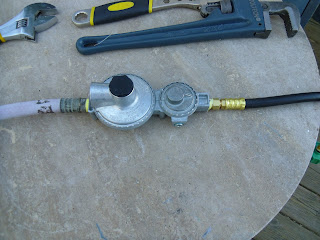From everyone that I have ever talked to about car maintenance an oil change is by far voted the most important thing to do. Oil is very crucial to the operation of the engine, it lubricates the parts, helps transfer the heat from the pistons out to the block and the coolant system, maintains a pressure in the system, and helps flush out any grunge that develops from the combustion cycle. This is the primary reason why the oil filter and oil is changed, also because of the extreme temperatures the oil breaks down and it will not be able to maintain the engine pressure. You may notice that towards the end of the oil life cycle when you start up your vehicle the low pressure light stays on for a little bit longer than it normally does, this is why. There is a lot of debate on whether to use regular oil or synthetic oil. Sure, synthetic oil is really good for you engine, but if you cannot afford it then regular oil will be fine. It is more important to change your oil frequently. The maximum distance should be the one recommended in your owners manual. They same debate occurs with brand of oil filters, the answer is the same, it does not matter. Oil changes are very easy to do, and the lube shops charge way to much for what they do. Instead of synthetic oil I use a Lucas Oil additive to replace a litre of oil for it. This a fantastic product that I believe works to help both old and new engines.
Due to my recent work on the PT cruiser I was a little leery about changing the oil on it as I was afraid that the filter was hidden is some dark crevice of the engine compartment. After I got the car up on the ramps and crawled underneath I was pleasantly surprised that the oil filter was easy to reach and that the drain plug was right beside it and easy to reach. I have been changing the oil in cars for a lot of years, but it has been a few years due to the lack of a location and the time to change the oil. With both vehicles to do now it makes more sense economically.
I also changed the oil in my 2001 PT Cruiser. The lube shops charge an extra $10 for the privilege of removing the bottom skid plate (shroud). There was 4 bolts (a few have been lost), it is ridiculous that they charge for that. Once I got the plate of it took me a moment to locate the drain plug as it was not located exactly on the bottom of the engine like most other engines. It looks like a little remote drain plug location, which makes it really to drain the oil. I think more vehicles should have it, especially now that I know what it is.
For those that haven't changed oil before here is the quick rundown of how I do it.
1.) Put the car on ramps and engage the parking break.
2.) Open the hood up and remove the oil filler cap.
3.) Put a drain pan underneath the drain plug and remove the drain plug.
4.) Remove the oil filter and drain into drain pan (may need a wrench).
5.) Put a little oil on the gasket ring of the new oil filter. The used oil is fine.
6.) Install new oil filter. Turn the oil filter 1/3 turn past the contact point.
7.) Reinstall the oil plug.
8.) Add oil (amount is in owner's manual).
9.) Reinstall the oil fill cap.
10.) Start car and check for leaks.
Here is a good reference from
Amsoil that you can look up the fluid capacities needed.
This is the procedure that I learned when I was 13 and I have been doing it ever since. Share some of your oil change stories in the comments below.






